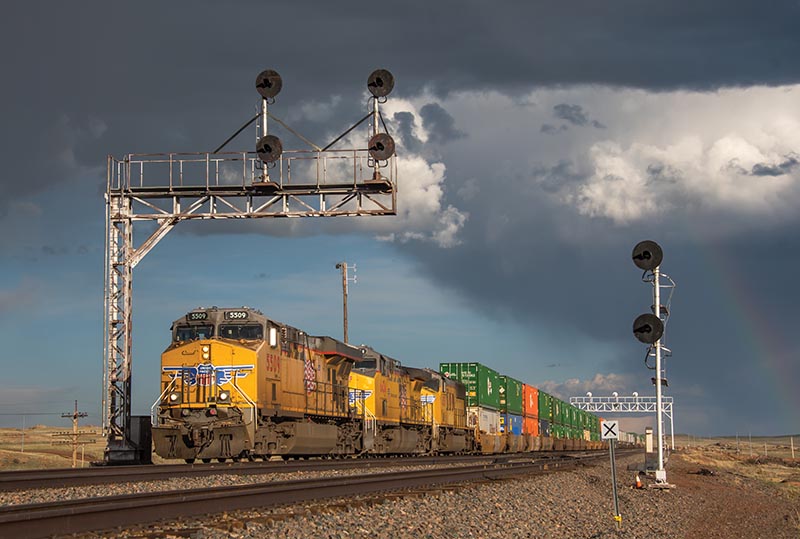By Justin Franz
Union Pacific is taking steps to achieve net-zero emissions by 2050, an ambitious plan that was outlined in its first-ever comprehensive Climate Action Plan released on December 6. The plan comes months after the railroad announced that it was aiming to reduce its own greenhouse gas emissions by 26 percent by 2030 from a 2018 baseline. That target aligns with what climate scientists have said needs to be done to meet the Paris Agreement, the 2015 international accord that was made to reduce global warming.
In a statement, UP President and CEO Lance Fritz said that climate change was starting to have an impact on its infrastructure and operations. In early 2021, UP’s main line through Northern California was closed for weeks due to a wildfire that damaged track, bridges and more. Elsewhere, flooding and more intense storms have also thrown a wrench into UP’s operations.
“There is no question climate change is impacting our operations,” Fritz said. “Our Climate Action Plan is a pragmatic approach to reduce the impact our activities have on the world’s climate.”
Fritz said that the railroad was already making progress in its goals to reduce emissions, thanks in part to Precision Scheduled Railroading, a method of operations where a railroad will try to squeeze the most out of its equipment and run longer trains. Fritz said the economic slowdown during the COVID-19 pandemic reduced emissions further. The railroad is also trying to use low-carbon fuels, which burn cleaner than conventional petroleum. UP plans to use 10 percent low-carbon fuel by 2025 and 20 percent by 2030. Lastly, the railroad plans on investing in battery-electric locomotives at its rail yards, replacing older locomotives currently in use that consume more fuel and are less efficient. In 2020, the railroad overhauled nearly 175 locomotives to make them more fuel-efficient and it is expected to overhaul about 100 locomotives in 2021. According to the report, the overhauls reduced the emissions put out by each locomotive by 53 percent. The railroad said another way it could reduce emissions in its switching operations was by using more “mother-slug” sets, essentially replacing two locomotives with one diesel locomotive connected to a slug. The railroad said it was turning old SD38-2s into slugs as part of the plan.



